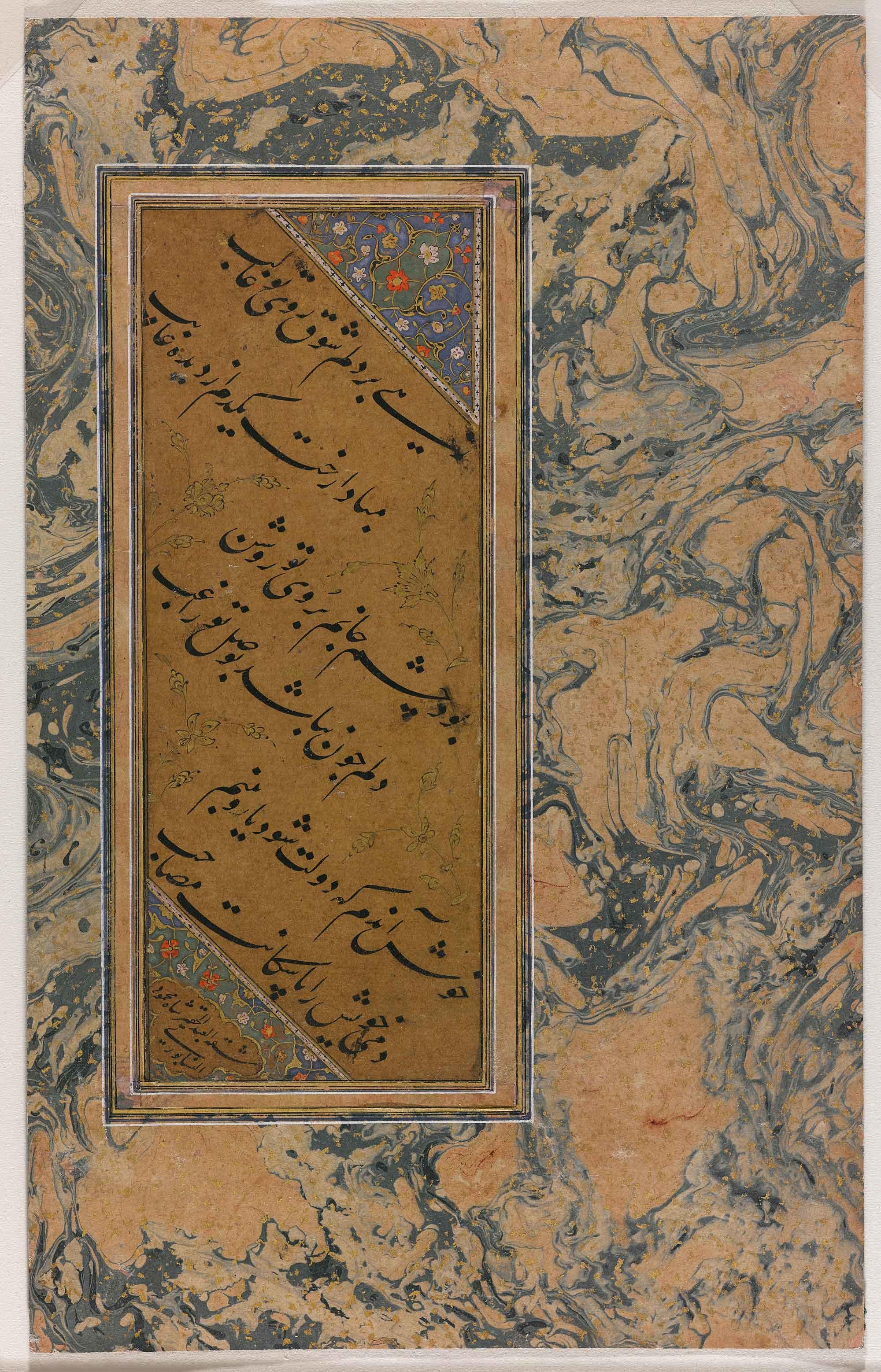Click on the image to zoom
Page of Nasta‘liq Calligraphy
Signed by Shah Mahmud Neyshaburi
- Accession Number:AKM254
- Place:Mashhad, Iran
- Dimensions:26.7 x 16.7 cm
- Date:1540
- Materials and Technique:Opaque watercolour, ink, and gold on paper
Shah Mahmud Neyshaburi (died circa 1564–65), whose signature is seen in the bottom left triangle of the text panel, was one of the most renowned calligraphers in the court of the Safavid shah Tahmasp I (reigned 1524–76). His masterful works for the shah, including a Khamseh of Nezami now in the British Library in London, and a unique nasta‘liq Qur’an now at the Topkapı Palace Museum Library in Istanbul, earned him the epithets Shahi and Zarin Qalam (Golden Pen). Neyshaburi’s calligraphic style is known for its elegant nasta‘liq, which creates balanced compositions through the rhythmic elongation of horizontal strokes. The border of Neyshaburi’s calligraphic panel is decorated with a blue-and-gold marbling effect known as abri (ebru in Turkish) used in Iran and Central Asia in the fifteenth century. Artists today still use the same method to achieve the elegant swirling effect of marbling by developing the desired pattern and colours in a water bath and then transferring them to paper.
Note: This online resource is reviewed and updated on an ongoing basis. We are committed to improving this information and will revise and update knowledge about this object as it becomes available.


